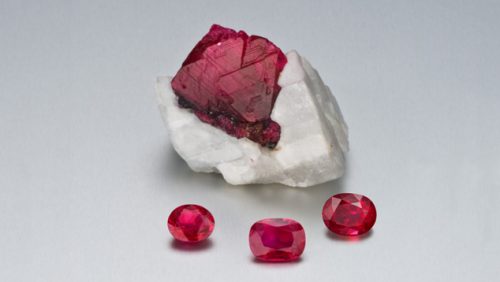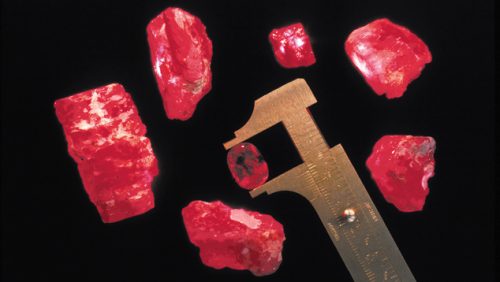Gemstone Buyer’s Guide
Gemstone Cut
Cut dramatically affects the appearance of a gemstone. Gemstones are cut to maintain maximum weight while exhibiting optimal color and brilliance, and, since each gem is unique, there aren’t any rigid geometrical standards to define an ideal proportion for maximizing beauty, rather each piece is individually analyzed for its perfect cut.

So, how to judge a good cut from bad: A well cut gem is able to handle the play of light; the gem comes alive with life and sparkles as light dances across the facets. Have a close look at the gem. There shouldn’t be any dark, lifeless areas (extinction) or flat, washed-out zones (window); light should be reflected consistently back to the eye.
Colored gemstones are cut in varied styles. Mostly gems are faceted like diamonds, in dozens of proportionate geometric shapes and styles. Some gemstones are cut in the traditional dome shape ‘cabochon’ that helps in bringing out the special optical effects such as star and cat’s eye seen in gems like jade, star sapphire, star ruby, opal, etc. Another, more recent style of cut is the fancy cut that ranges from classic cameos and natural motifs to designs that push the edge of abstract expression.
Gemstone Color
Color is the most defining characteristic of a gemstone. Most gemstones occur in a spectrum of colors, while some have more restricted palettes. Since the color phenomenon in gems is very complex, experts analyze the chromatic options in terms of three essential components: hue, tone, and saturation. Hue is the basic or the primary color of the gemstone; tone refers to the lightness or darkness of the color, and saturation refers to the purity or intensity of the primary color.

As a general rule, a bright, intense, pure, rich and vivid color is always best. The most valuable gemstones are those that exhibit a pure color with only slight hues of other colors in addition to their primary color.
The primary color should be medium, neither too dark nor too light.
While buying gemstones you need to be aware of color ranges and objective value assessments, but it’s best to rely on your eyes and heart. Select your gemstone by trusting your instincts; if a particular color speaks to you, by all means listen!
Gemstone Clarity
Gemstones naturally occur with characteristic marks, called inclusions, that were created either during the process of crystallization of the gemstone or during the polishing process. Inclusions do not necessarily diminish a colored gemstone’s beauty or desirability.
In some cases, inclusions can actually add to a gemstone’s beauty and value. Special, needle-like inclusions cause the spectacular optical phenomenon called cat’s eye and asterism displayed by chrysoberyl and corundum (sapphire and ruby, respectively). The rare and precious demantoid garnet contains unusual, golden fibrous inclusions known as horsetail.

Since colored gemstones are created by a variety of geologic processes, it’s common for some type of gemstones to have more inclusions than others. This is why a gemstone’s species and variety is considered while judging its clarity. For example, gemstones like aquamarine, citrine, tanzanite, topaz and kunzite are typically eye clean while gemstones like emerald, ruby, sapphire and red tourmaline are almost always visibly included.
Carat Weight
Carat is the unit of measurement used to weigh diamonds and gemstones. One carat is equal to 200 milligrams or 0.20 grams. In addition to carat weight, gemstones are measured in size (mm). Two gemstones of the same size can vary in weight owing to different proportions. Gemstones are typically priced on a per carat basis, depending on the color and brilliance of the stone, and since gemstones rarely occur in large sizes, per-carat prices usually climb steeply as the carat weight goes up.


